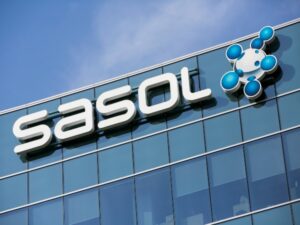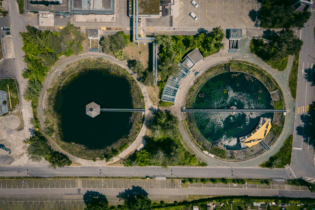Energy and chemicals conglomerate Sasol is taking strategic steps to alleviate concerns among investors about a significant drop in yearly production at its Secunda facility. This move is aimed at meeting the ambitious target of reducing the carbon-intensive Mpumalanga complex’s greenhouse gas emissions by 30% by 2030.
Outgoing CEO Fleetwood Grobler, during the presentation of the final results, clarified that the 6.7-million tons output profile announced in August is considered the “low road” scenario. This scenario emerged after a review of Sasol’s emission roadmap, eliminating the use of liquefied natural gas (LNG) as a feasible feedstock for Secunda. As a result of this review, Sasol impaired the Secunda asset by R35-billion. To ensure that production volumes do not fall below 7 million tons while still achieving the goal of reducing coal volumes by 25% by 2030, Sasol is implementing various mitigation actions. A key initiative involves a coal de-stoning project designed to enhance coal quality. The company is familiar with the dense-medium separation technology for de-stoning and expects to make a final investment decision (FID) this year, with significant progress already made in securing necessary environmental approvals. Grobler, in an interview, emphasized that the capital expenditure figure for the de-stoning project would be disclosed only upon the FID. He highlighted the project’s priority status, considering it one of the most significant value-unlock projects for Sasol.Despite a 34% decrease in headline earnings per share in the six months to December 31, 2023, Sasol remains optimistic about the de-stoning project’s potential impact on Secunda’s production volumes, anticipating recovery to around 7.5 million tons in the latter part of the current decade.
Grobler dismissed the misconception that production needs to reach 6.7 million tons to meet decarbonization targets. Sasol expects a decision next month from Minister Barbara Creecy regarding its proposed alternative approach for measuring sulfur dioxide (SO2) emissions from Secunda’s coal boilers. If approved, the commitment to reducing coal consumption by 25% could be met through a boiler turndown plan, aligning with legal obligations and decarbonization goals. Despite potential feedstock options, including increasing gas usage in Secunda, Sasol emphasized the challenges, stating that no extension for industrial gas users in South Africa was envisioned due to the inability to recover exploration and development costs under the current regulated pricing formula. Sasol remains committed to its renewable energy plans, aiming to install 1,200 MW of wind and solar capacity by 2030, with progress already made in achieving financial close for a portion of the procured capacity for Secunda.







